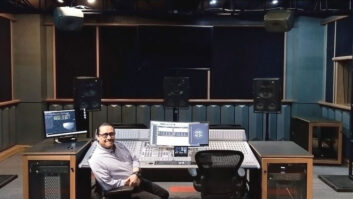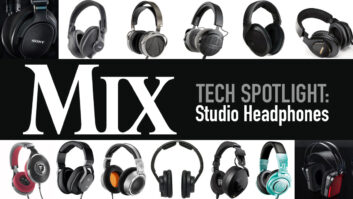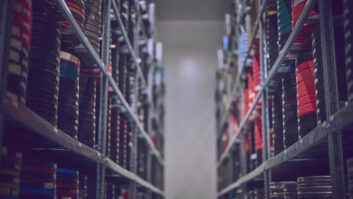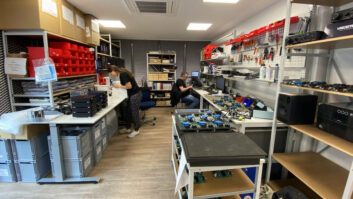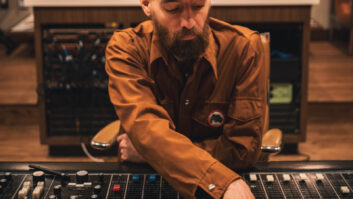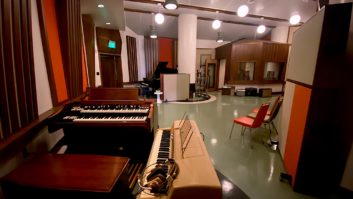It’s buzzing (okay, make that “humming”) like a beehive at the warehouse-style office and studio space of HUM Music+Sound Design and its satellite companies, SubZero and Grasshopper. Recent action at HUM includes high-profile commercial scores like Microsoft’s “One Degree of Separation” campaign, Chili’s ads featuring top-of-the-poppers ‘N Sync, and projects for Toyota, Lexus and Bud-weiser. Meanwhile, subsidiary SubZero, formed last year to bridge the gap between advertising agencies and the music industry, hired influential KCRW DJ Tricia Halloran as creative director, joining forces with HUM/SubZero executive producer Debbi Landon.
Musician/composer Jeff Koz is the driving force behind all of HUM’s related companies. A multi-instrumentalist who broke into sound-for-picture by scoring B horror movies, Koz founded HUM in 1996, wisely locating the company in what has become Santa Monica, Calif.’s, thriving media and post-production district. The building, by architect Walter Meyer and acoustic designer Marshall Long, now houses offices, two full recording studios, voice-over and Foley suites, and a dubbing room, along with a kitchen, numerous client lounges and a rotating display of large-format paintings by artist Gregory A. J. Miller.
Although the complex is fitted with Pro Tools systems and Yamaha 02Rs, as well as a plethora of gear by manufacturers such as Avalon, API and HHB, the heart of its recording setup is Logic Audio. “I never got into Pro Tools,” Koz confesses, “even though we have all of the hardware and upgrades. The Logic interface is more intuitive for musician types like me. You can do everything with it now. The Logic EXS sampler, for example, is unbelievable. I can honestly say it has changed my life because now everything in a session is recallable.”
Koz has also recently become a fan of Korg’s Karma synthesizer, citing it as an example of composer-friendly new technology. “It used to be so difficult to get inside the architecture of a synth that you were likely to leave it up to the engineer to process things,” he says. “Now, with all the software, synthesizers and samplers, programming has become easy. As a musician, you can intuitively follow an idea and experiment along the way with the sound. It’s really amazing in terms of musical inspiration.”
Inspiration was definitely a necessity for the Microsoft campaign, a multipronged challenge requiring music and sound design for both the melody that interprets the corporate “dot-Net” brand and four different, split-screen format spots. For example, in “Vintage” — recognizable to anyone who’s seen television in the past few months — an accident causes racks of wine bottles to crash to the floor. On one screen, a fast-thinking manager quickly increases the price on his now-reduced inventory, while on the other screen, a nonchalant worker notices the sudden change on his bar code reader.
“Today’s music for the advertising world is very much about giving clients options,” says Landon, who served as producer for the tracks. “You go through a lot of ideas, a lot of evolution, on something as high-stakes as a global-branding campaign for Microsoft. Initially, the clients weren’t looking for specific music; instead, they wanted a very ambient background sound, like a bed, for all of the spots. It was intended as a mood rather than a music track, and they wanted it to be very sound design-oriented. But because the music really set the temperature for the spot, they realized the first concept didn’t work; it left them feeling cold. They needed something that would help move the spots forward, so we went into creating specific, very diverse types of music for each spot.”
Koz acknowledges a definite trend toward very “music-conscious” directors. “There’s definitely increased awareness about how powerful a role music plays in marketing your project,” he says. “Whether it’s television, a film or a commercial, you have to get an identity across quickly. What we do is help people achieve that goal through music.”
The most recent company under the “HUMbrella” is Grasshopper, described by Koz as an endeavor to help keep the company fresh by allowing its younger up-and-coming composers the ability to accept lower-budget projects. “It’s exciting,” he says. “In a way, it breathes new life into things. People already working here can target their peers; the up-and-coming editors and directors who are looking for tracks.”
Grasshopper is a reaction to the recent excess of low-budget projects making the rounds in the advertising industry. “A bell went off,” Koz says. “People were complaining, but there’s no denying that it’s a trend in the industry. This is a way to tackle it head-on. Bring us your low-budget projects, and our people in Grasshopper will make sure they’re done right and that you’re happy. Grasshopper is a positive, proactive reaction to what our industry needs right now.”

